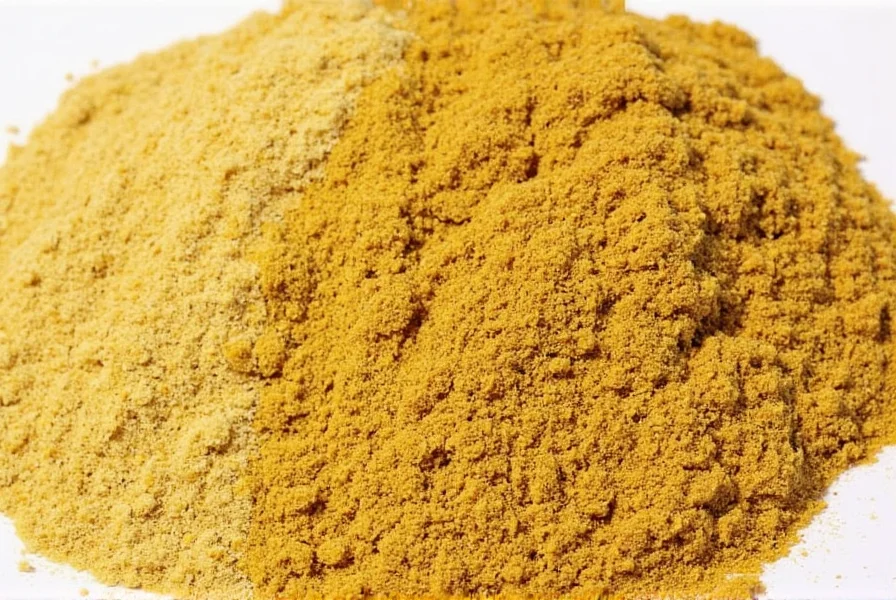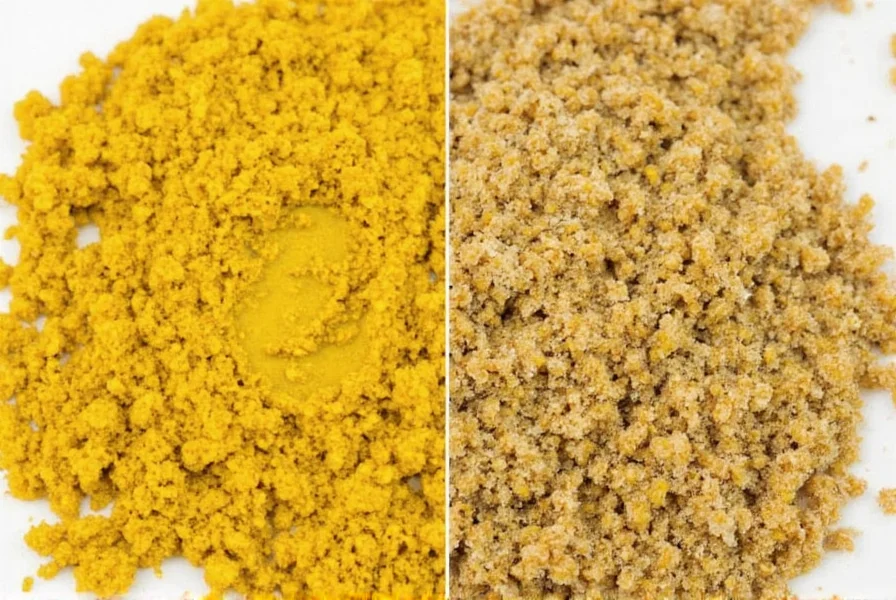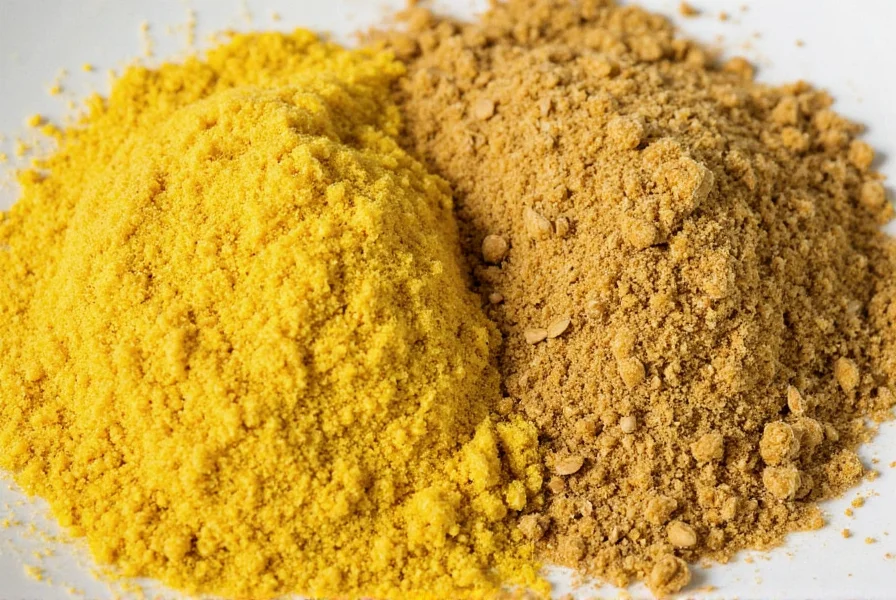Yes, dry mustard and ground mustard are the same product—simply different names for powdered mustard seeds. Both terms refer to mustard seeds that have been finely milled into a powder, with no additional ingredients. This common kitchen staple provides intense mustard flavor without the liquid base found in prepared mustard.
Confusion about dry mustard versus ground mustard is understandable given the interchangeable terminology used across recipes and packaging. Whether you're following a vintage cookbook calling for “dry mustard” or a modern recipe specifying “ground mustard,” you're working with identical ingredients. This powdered form delivers concentrated mustard flavor that activates when mixed with liquid, making it indispensable for dressings, marinades, and spice blends.
Understanding Mustard Terminology
The terms “dry mustard” and “ground mustard” both describe mustard seeds that have been dehydrated and finely milled into powder. This distinguishes them from prepared mustard (the familiar yellow condiment) which contains vinegar, water, and other ingredients.
Regional and historical factors influence which term appears on packaging. Older American cookbooks typically use “dry mustard,” while contemporary packaging often says “ground mustard.” Internationally, “mustard powder” serves as the universal term. Despite these naming variations, the product inside remains chemically identical.

How Mustard Powder Is Made
Both dry and ground mustard originate from the same process:
- Mustard seeds (typically yellow, brown, or black varieties) are harvested
- Seeds undergo thorough drying to reduce moisture content
- Dried seeds pass through industrial mills that pulverize them into fine powder
- Manufacturers may add anti-caking agents like cornstarch (usually 2-5%)
- Product is packaged without liquid components
This production method creates a shelf-stable product that maintains potency for 2-3 years when stored properly. The absence of vinegar means the pungent enzymes remain dormant until activated by moisture—a crucial characteristic for recipe success.
Culinary Applications and Flavor Profile
Dry/ground mustard delivers a sharper, more intense flavor than prepared mustard due to its concentrated form. When reconstituted, it provides:
| Characteristic | Dry/Ground Mustard | Prepared Mustard |
|---|---|---|
| Flavor Intensity | High (concentrated) | Moderate (diluted) |
| Activation Time | 5-10 minutes after adding liquid | Immediate |
| Shelf Stability | 2-3 years unopened | 1-2 years refrigerated |
| Recipe Function | Flavor base, emulsifier | Finished condiment |
Chefs prefer dry mustard in spice rubs, cheese sauces, and barbecue blends where its binding properties and delayed heat release create superior texture and flavor development. The powder dissolves completely when properly incorporated, unlike prepared mustard which can make sauces watery.
Substitution Guidelines
When recipes call for one term but you have the other, use these dry mustard substitution ratios:
- 1 teaspoon dry mustard = 1 teaspoon ground mustard (exact 1:1 replacement)
- 1 teaspoon dry mustard = 1 tablespoon prepared mustard (adjust liquids accordingly)
- 1 tablespoon prepared mustard = 1 teaspoon dry mustard powder + 2 teaspoons liquid
For best results when substituting dry for prepared mustard, mix the powder with warm liquid and let it stand for 10 minutes before using. This allows the myrosinase enzyme to activate fully, developing the characteristic pungency. Cold liquids produce milder results—useful when making subtle dressings.

Common Misconceptions Clarified
Several myths persist about dry mustard powder versus ground mustard:
Myth: “Ground mustard contains additional spices”
Fact: Pure mustard powder contains only milled seeds (and occasionally anti-caking agents). Spice blends like curry powder may include mustard but are distinctly labeled.
Myth: “Dry mustard is stronger than ground mustard”
Fact: Identical products have identical heat levels. Perceived differences usually stem from varying seed blends or freshness.
Myth: “You can’t use ground mustard in canning”
Fact: Both terms refer to the same safe product for canning. The concern applies to prepared mustard’s variable acidity.
Storage Recommendations
Maximize shelf life by storing mustard powder in an airtight container away from light and moisture. Properly stored:
- Unopened: 3 years at room temperature
- Opened: 18-24 months (check for faded color or musty smell)
- Refrigerated: Extends freshness but may cause clumping
Test potency by mixing 1/4 teaspoon with 1 teaspoon warm water. Fresh powder should develop noticeable heat within 5 minutes. Stale product yields weak flavor and fails to thicken properly.
Practical Usage Tips
Professional chefs recommend these techniques for optimal results with ground mustard in recipes:
- Always bloom mustard powder in warm liquid before adding to sauces
- Combine with acidic ingredients (vinegar, wine) to control heat development
- Use in cheese sauces to prevent separation and enhance flavor
- Add to meat rubs 24 hours before cooking for deeper flavor penetration
- Mix with honey for glazes that balance heat and sweetness
Understanding that dry mustard and ground mustard are identical products eliminates recipe confusion and expands your culinary flexibility. This versatile pantry staple transforms sauces, marinades, and dressings with its unique ability to provide both flavor and functional binding properties.











 浙公网安备
33010002000092号
浙公网安备
33010002000092号 浙B2-20120091-4
浙B2-20120091-4